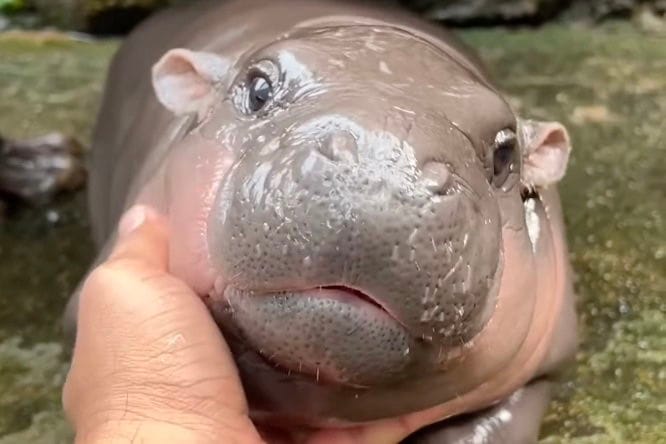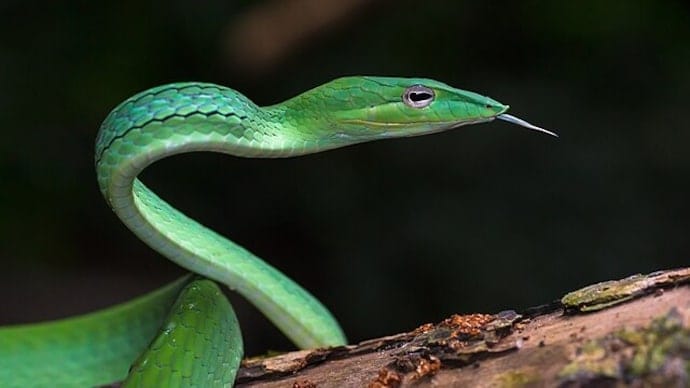Asian Giant Hornet - The Deadly Invader

The Killer Instinct
Meet the Asian Giant Hornet, an insect with a reputation that precedes it. These hornets are known for their aggressive behavior and powerful venom, making them a force to be reckoned with. When threatened, they don't hesitate to strike, and their stinger can deliver a painful and potentially deadly dose of venom.
Physical Characteristics
These hornets are massive, growing up to 6.35cm in length - that's about the length of your average thumb. Their stinger is a potent tool, capable of injecting venom that can cause serious harm. And let's not forget their menacing appearance, with orange and black bodies that signal danger.
Deadly Venom
Their venom is a complex mixture of compounds that can cause:
- Necrosis - tissue damage that can lead to amputation or worse
- Anaphylactic shock - a severe allergic reaction that can be fatal
This potent venom can overwhelm the body's defenses, leading to organ failure and death. In Japan, for example, Asian Giant Hornet stings are responsible for dozens of deaths each year. You don't want to mess with these hornets.
When they attack, they don't just sting once - they can sting repeatedly, injecting more venom with each strike. This makes them particularly deadly, especially for those who are allergic or have pre-existing medical conditions.
Invasion and Impact
Imagine an insect so deadly it can wipe out an entire bee colony in just a few hours - welcome to the world of the Asian Giant Hornet. These hornets have been making headlines for their invasions in several countries, including France and the US, leaving a trail of destruction in their wake.
Threat to Local Ecosystems
The Asian Giant Hornet's invasion is a serious threat to local ecosystems, particularly bee populations. A single hornet can decimate a colony in a matter of hours, killing tens of thousands of bees. This doesn't just affect the bees; it has a ripple effect on the entire ecosystem.
In France, for example, beekeepers have reported losing entire colonies to these hornets. Denis Jaffré, a French beekeeper, has taken matters into his own hands and developed a homemade trap to catch the hornets and mitigate their impact. His innovative approach has shown promise in controlling the hornet population.
Consequences for Agriculture and Biodiversity
The impact of the Asian Giant Hornet's invasion goes beyond just bee populations. With bees playing a crucial role in pollination, their decline can have significant consequences for agriculture and biodiversity. Some of the key concerns include:
- Loss of crop diversity and yield
- Impact on food security
- Disruption of ecosystem balance
As the Asian Giant Hornet continues to spread, it's essential to understand the severity of the threat and work towards finding effective solutions to mitigate its impact.
Recent Attacks

Imagine being on vacation with your family, enjoying a thrilling zip-lining experience in a lush jungle, when suddenly you're swarmed by a group of aggressive, painful hornets. That's exactly what happened to American father and son, Daniel Owen and 15-year-old Cooper, in a tragic incident in Laos.
The pair were attacked by Asian Giant Hornets while zip-lining in a jungle park, receiving over 100 stings between them. Despite receiving medical attention, both victims sadly succumbed to their injuries. This devastating incident highlights the dangers posed by these invasive species and the need for caution and preparedness when interacting with their habitats.
The attack on Daniel and Cooper is a stark reminder of the potential threats posed by Asian Giant Hornets. These hornets are known for their aggressive behavior when threatened, and their venom can cause severe pain, inflammation, and even anaphylaxis. In some cases, multiple stings can be fatal, as seen in the tragic incident in Laos.
Key details of the incident include:
- Location: Jungle park in Laos
- Activity: Zip-lining
- Number of stings: Over 100
- Victims: Daniel Owen and his 15-year-old son Cooper
This incident serves as a warning for travelers and outdoor enthusiasts to be aware of the risks associated with Asian Giant Hornets and take necessary precautions when exploring areas where they are known to exist.
The Science Behind the Sting
The Asian Giant Hornet's sting is like nothing you've ever felt before - it's like a red-hot needle piercing your skin, injecting a cocktail of toxins that can shut down your body in minutes.
These hornets are attracted to sweet substances like fruit juice, soda, and even the sugary secretions on flowers. But don't be fooled - they're not just looking for a snack. They're also fiercely territorial, and if you get too close to their nest, they'll defend it with deadly precision.
The Venom's Dark Secret
Their venom contains a powerful neurotoxin called mandaratoxin, which can cause anaphylactic shock and cardiac arrest. In Japan, Asian Giant Hornets are responsible for dozens of deaths every year, with some victims succumbing to just a single sting.
- Mandaratoxin is a potent blocker of acetylcholine receptors, leading to rapid muscle paralysis and respiratory failure.
- The venom also contains other compounds that cause intense pain, inflammation, and tissue damage.
Researchers are working tirelessly to understand the behavior and biology of these hornets, hoping to develop effective countermeasures against their deadly sting. By studying their social structure, mating habits, and navigation patterns, scientists hope to find ways to disrupt their colonies and prevent future attacks.
Prevention and Protection

When it comes to Asian Giant Hornets, you're better off being safe than sorry. One sting can be deadly, so taking precautions is key. Wearing protective clothing like beekeeping suits and veils can reduce the risk of attacks when working or hiking in areas where these hornets are known to exist.
Reducing the Risk
Avoiding areas with known hornet activity is also crucial. If you know a nest is nearby, don't go near it. Simple, right? But it's surprising how often people underestimate these insects. For instance, in Japan, where Asian Giant Hornets are a significant threat, many people have lost their lives due to hornet attacks while trying to remove nests themselves.
Homemade Traps
Using homemade traps is another effective way to control the hornet population. One such trap was developed by Denis Jaffré, a beekeeper who lost some of his bees to these hornets. His trap uses a simple design and a lure like rice vinegar to attract the hornets, which then get trapped inside. This method can help reduce the number of hornets in an area, making it safer for both humans and bees.
Raising Awareness
Public awareness and education are critical in preventing attacks and mitigating the impact of Asian Giant Hornets. By knowing what to look out for and how to react, people can avoid dangerous encounters. In areas where these hornets are established, public outreach programs can play a significant role in keeping communities safe.
- Wear protective clothing when in areas with known hornet activity
- Use homemade traps to control the hornet population
- Educate yourself and others about the dangers of Asian Giant Hornets
The Future of Invasion

Imagine a world where the buzzing of a lawnmower is replaced by the menacing hum of Asian Giant Hornets, their stingers at the ready to defend their territory. As global trade and travel continue to break down borders, the risk of these deadly invaders spreading to new regions grows exponentially.
A Growing Concern
The increasing movement of goods and people across the globe creates a highway for these hornets to hitch a ride into new territories. For instance, in 2019, the first Asian Giant Hornet nests were discovered in Washington state, USA, sparking widespread concern and swift action to eradicate the threat. This incident highlights the need for vigilance and cooperation among countries to prevent further invasions.
Efforts to monitor and control their populations are already underway. Scientists are working tirelessly to track the hornets' movements, understand their behavior, and develop effective strategies for mitigation and control. Some of the approaches being explored include:
- Tracking the hornets' movement patterns to identify potential invasion routes
- Developing traps that mimic the hornets' natural attractants
- Studying the hornets' social structure to disrupt their colonies
The Key to Control
Understanding the biology and behavior of these hornets is key to developing effective strategies for mitigation and control. By studying their habits and habitats, scientists can identify vulnerabilities that can be targeted to prevent further invasions. For example, researchers have discovered that Asian Giant Hornets are attracted to certain chemical signals, which can be used to develop traps or deterrents.
More research and cooperation are needed to prevent further invasions. It's a daunting task, but one that's crucial to protecting public health and the environment. By working together, we can reduce the risk of these deadly invaders taking hold in new regions.





/https://static.texastribune.org/media/images/AmericanBlackBear.jpg)











Comments ()